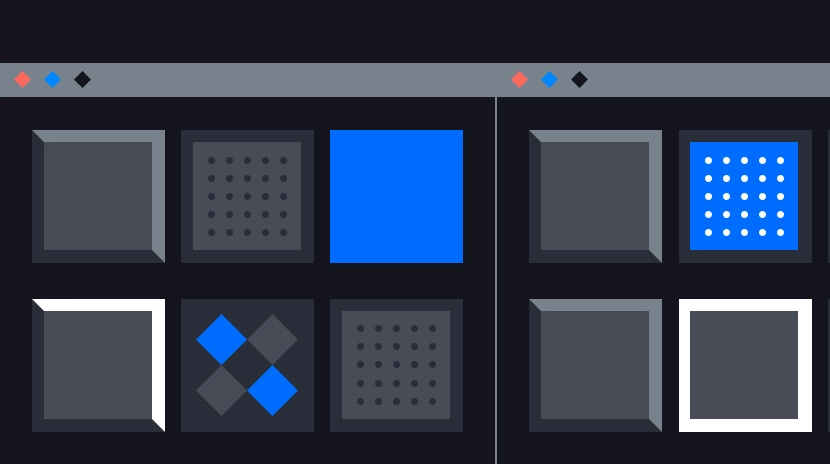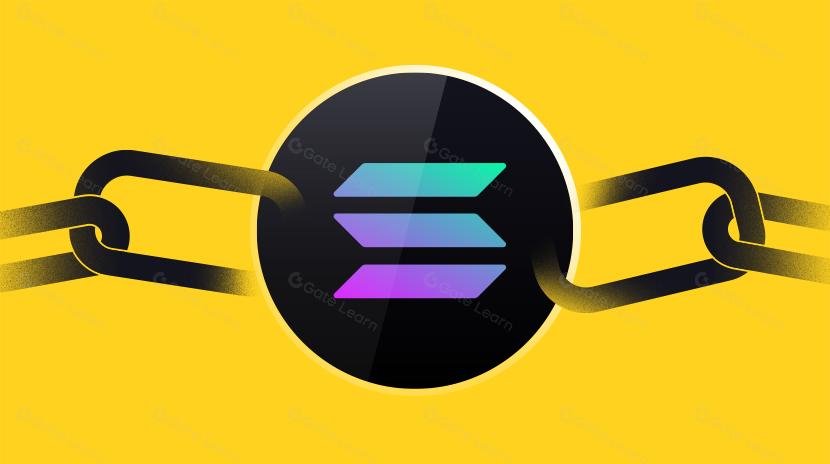Understanding Full-Chain Games in One Read
Introduction
Blockchain games represent an innovative genre that has captured the attention of gamers worldwide. Gaming giants like Square Enix, Nexon, and Ubisoft are all exploring this cutting-edge technology.

Most blockchain games combine traditional game servers with blockchain technology to ensure players’ ownership of in-game items.
However, for many games, blockchain isn’t a cure-all. Most first-person shooter games can’t operate on a blockchain. The speed of blockchain is too slow to support the smooth operation of games, and achieving sub-millisecond player reaction times using blockchain is entirely unrealistic. Thus, most blockchain games use blockchain as just one part of their technology stack, primarily for allocating and transferring digital assets and currency within the game. However, a growing cohort of Web3 native game developers and players are now striving to create a purely on-chain gaming experience. Such blockchain games are termed “Full-Chain Games.”
What are Full-Chain Games?
Full-Chain Games refer to games and NFT ecosystems that operate entirely on the blockchain. This means that apart from the frontend (what players see on their screens), everything else runs on the blockchain.

In Full-Chain Games, all player actions and data are recorded on the chain, rather than on game servers
The primary distinction between Full-Chain Games and traditional blockchain games is that the former implements game logic directly within smart contracts and uses NFT smart contracts to store game data such as player names and rankings on the blockchain, rather than centralized game servers. A game can only be labeled a “Full-Chain Game” when all its game logic and data are stored on the chain.
Operational Mechanism of Full-Chain Games
Full-Chain Games operate entirely through smart contracts, encapsulating both the game logic and data. In broader terms, the game logic dictates a game’s rules. For instance, in an online trading card game (TCG), the game logic determines how each match begins, the sequence in which cards are played, and when the match ends. Rules are the soul of a game. In Full-Chain Games, these rules are embedded within smart contracts, making them immutable and resistant to alterations.

While traditional blockchain games employ both smart contracts and game servers, Full-Chain Games exclusively utilize blockchains and smart contracts
Smart contracts are also pivotal for creating, distributing, and transferring digital assets. In the aforementioned card game, these digital assets are the traded card NFTs. Digital assets remain the most widely adopted technology in the blockchain gaming arena, with several NFT games, including Gods Unchained, Axie Infinity, Illuvium, WildCard, and Deadrop, utilizing them.
Challenges Faced by Full-Chain Games
Why aren’t the majority of games today fully on the blockchain? It’s primarily because Full-Chain Games present various challenges. Developers must adhere to stringent technical standards, and the gaming experience for players can be considerably diminished.

Blockchain Speed and Scalability
A blockchain is a shared computational network, maintained by thousands of computer nodes worldwide. As a result, it faces bottlenecks in speed and scalability, two essential elements for crafting fast-paced games. These technical constraints currently restrict Full-Chain Games to genres like card games or strategy games, where players take turns. The speed of smart contracts doesn’t yet support fast-paced games like Multiplayer Online Battle Arenas (MOBA), First-Person Shooters (FPS), or even Real-Time Strategy (RTS) games.
Transparent Player Activities
Smart contracts and their transactions are completely transparent, accessible to anyone for inspection. While transparency is a boon in financial contexts, it’s a hindrance in gaming due to privacy concerns. For instance, features like the “fog of war” in MOBAs or RTS games, which conceal parts of the gameplay, are nearly impossible to implement on-chain. While some technological solutions might mitigate occasional issues, they still don’t fully address the privacy challenges in Full-Chain Games.
Bots
The design of Full-Chain Games and smart contracts inadvertently creates an environment where bots and genuine players coexist. Without a centralized entity to deploy anti-cheat software, this can deteriorate the experience for gamers. Especially when rare digital assets or NFTs are rewarded in a game, bots become more rampant, lured by the substantial rewards.
Technical Bottlenecks
Prioritizing security, blockchains, and smart contracts face certain technical constraints that prevent them from executing specific tasks.
The two most prominent hurdles for Full-Chain Games are obtaining tamper-proof random numbers and automating game logic.
- Almost every Full-Chain Game relies on on-chain random number solutions, which can be manipulated by the network’s validators (or miners) as they can view these numbers before they are finalized on the chain.
- Intermediate in-game processes, like transmitting a series of game logic based on player actions, require automated smart contract functions to enhance the gaming experience. However, both smart contracts and the blockchain itself fall short in executing these tasks. For instance, if a player acquires an asset, an automated asset retrieval operation must be initiated before it appears in the player’s inventory.
Advantages of Full-Chain Games
Developing a full-chain game involves overcoming numerous challenges, yet the ecosystem of full-chain games can leverage the benefits of blockchain and smart contracts to offer both players and developers immense value.

Composability and Open Source
Since full-chain games deploy the entire game on the blockchain, players and developers can replicate game logic, creating entirely new game genres. They can design diverse interfaces and develop a variety of applications based on the game to enhance the gaming experience, thereby promoting openness and entertainment. Therefore, full-chain games can be seen as a type of “game primitive.” Just like fantasy games such as “Dungeons & Dragons,” full-chain games provide a consistent set of rules for players, upon which endless creative expansions can be built.
Decentralization, Digital Permanence, and Immutability
A commonly overlooked feature of full-chain games is their autonomy once deployed on the chain. As long as there are validators in the blockchain network, the game can remain online indefinitely. This ensures eternal data security for full-chain games. As long as the blockchain operates, the game code can run indefinitely. In theory, if the blockchain hosting the game remains active for the next 300 years, the game and its logic will persist and remain stored on the blockchain, allowing players to engage with it continuously.
Low-Risk Technological Innovation
Given the susceptibility of the blockchain environment to various attacks and the substantial assets it protects, translating theoretical research into practice is daunting, especially in the decentralized finance (DeFi) sector where the risks of applying new technologies are immense. Full-chain games offer researchers and developers a low-risk environment to explore cutting-edge technologies like zero-knowledge proofs and homomorphic encryption. While full-chain games and high-risk applications like DeFi often share the same infrastructure, the former poses a lower risk, making it a more suitable testing ground.
Diverse Game Front-End Interfaces
Blockchain and smart contracts are inherently back-end technologies. For players to interact with the most genuine chain-based game, they would typically require a command line. Tech-savvy players and developers can develop various front-end interfaces based on the same blockchain logic and data. They need only connect the game’s front-end interface to the backend smart contract. As a result, a single on-chain game can have multiple game interfaces. Two players could be playing the same game, but one might be immersed in a medieval setting while the other explores a space-themed environment.
Full-Chain Games Case Studies
The earliest full-chain games appeared in 2013. Since then, the field has continuously advanced.
HunterCoin
Launched in 2013, HunterCoin is widely recognized as the first full-chain game. This game was an experimental endeavor to demonstrate the potential of decentralized game development. The game was deployed on its own blockchain, with players’ in-game actions, such as movement, gathering, and attacking, being submitted as transactions.

HunterCoin: Gaming World
Dark Forest
Dark Forest is a more recent real-time strategy full-chain game set in space. Inspired by Liu Cixin’s science fiction novel “The Dark Forest” from the “Three-Body” series, players are placed on an unknown planet in space with the mission to gather resources, expand territory, and conquer new planets. Dark Forest is the first full-chain game to incorporate a “fog of war” feature. The game was developed with the objective of exploring zero-knowledge proof technology; they use zero-knowledge proofs in the game to hide players’ location information from one another.

Dark Forest: A Real-time Strategy Game on the Blockchain, Where Players Battle in Space
Development of Web3 Native Games
Though full-chain games are a relatively niche track within the Web3 ecosystem, there remains an enthusiastic exploration from community members, researchers, and developers into the boundaries of blockchain gaming.
Disclaimer:
- This article is reproduced from [Foresightnews], and the copyright belongs to the original author [Chainlink]. If there are objections to the reproduction, please contact the Gate Learn team, and the team will process it promptly according to relevant procedures.
- Disclaimer: The views and opinions expressed in this article represent only the personal views of the author and do not constitute any investment advice.
- Other language versions of the article are translated by the Gate Learn team. Without mentioning Gate.com, it is not permitted to copy, disseminate, or plagiarize the translated articles.
Related Articles

The Future of Cross-Chain Bridges: Full-Chain Interoperability Becomes Inevitable, Liquidity Bridges Will Decline

Top 10 NFT Data Platforms Overview

Solana Need L2s And Appchains?

Sui: How are users leveraging its speed, security, & scalability?

7 Analysis Tools for Understanding NFTs
